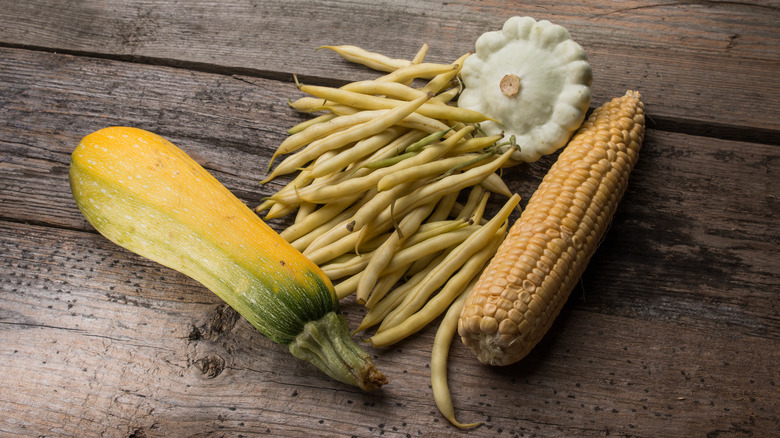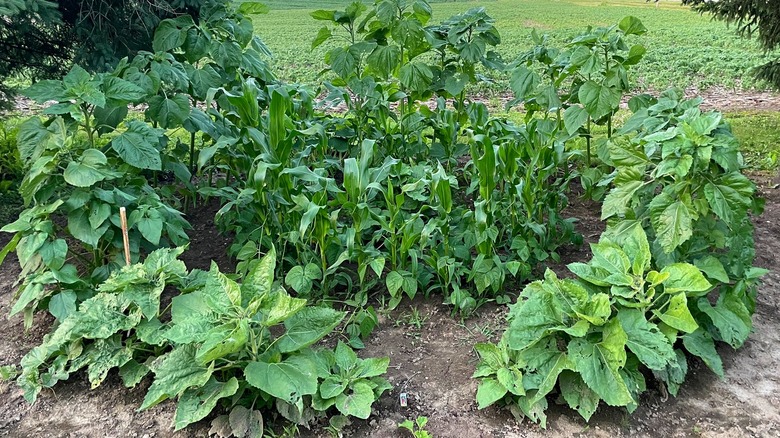The Importance Of The Three Sisters In Indigenous Cuisine
Many acclaimed chefs will sometimes utter the phrase "If it grows together, it goes together" in reference to utilizing ingredients grown in close proximity to one another for the tastiest results. There is perhaps no better (or older) example of this than the Three Sisters. Historically, many indigenous American tribes depended on agriculture to sustain their communities. One way they helped ensure healthy, bountiful harvests was to plant corn, beans, and squash close together in a practice known today as intercropping. These are known as the Three Sisters and, like a family, they benefit each other in various ways.
First, corn is planted until seedlings begin to form. Once sprouted, farmers gather dirt around the fledgling stalks in a one-foot mound. Beans are planted in those small hills. Growing corn stalks act as trellises for the beans, allowing them to climb and thrive. The beans also pull nitrogen from the air and fertilize the surrounding soil with nitrates. When planted nearby, the large leaves of squash shelters the ground from the sun, which helps retain moisture and prevent weed growth.
Today, we use microwaves to make shucking corn easier and we've discovered hacks for cleaning pumpkin seeds before roasting them for a tasty snack. Yet before grocery stores and technological advances, these foods were used in Indigenous cuisine to bolster entire communities. The Three Sisters held spiritual significance with Indigenous people, too. Amongst the Seneca people of what's now western New York, they were known as Diohe'ko, meaning "those who support us."
Legends of the Three Sisters
There are quite a few variations of stories explaining the cultural significance held by the Three Sisters. One Haudenosaunee (Iroquois) version tells the story of the creation of the world. As the tale goes, Sky Woman looked down at the Earth through a hole in the sky from her home in the upper world. She tumbled through the opening and plummeted towards the sea. Watching the Sky Woman fall, animals gathered soil from the bottom of the sea and placed it on the back of a giant turtle. She landed safely on this land mass dubbed Turtle Island — now known as North America.
Prior to falling, the Sky Woman was with child. She gave birth to a daughter who became pregnant from the West Wind and had two sons before perishing during childbirth. Sky Woman buried her daughter. From the burial site, three divine plants emerged: corn, beans, and squash. The crops from these plants nourished Sky Woman's grandsons and, eventually, all Haudenosaunee.
The Three Sisters feature in other legends relating to the Great Spirit, but all convey the importance of how these crops work together to provide sustenance. Modern day advancements like refrigerators have afforded us privileges like storing fresh green beans and squash for the long term. Yet long before, Indigenous people already understood that these plants were sacred and nutritious, and so held them in high regard. The Indigenous cuisine they combine to create sustained these tribes for centuries, and they continue to nourish folks on Turtle Island who grow them today.

